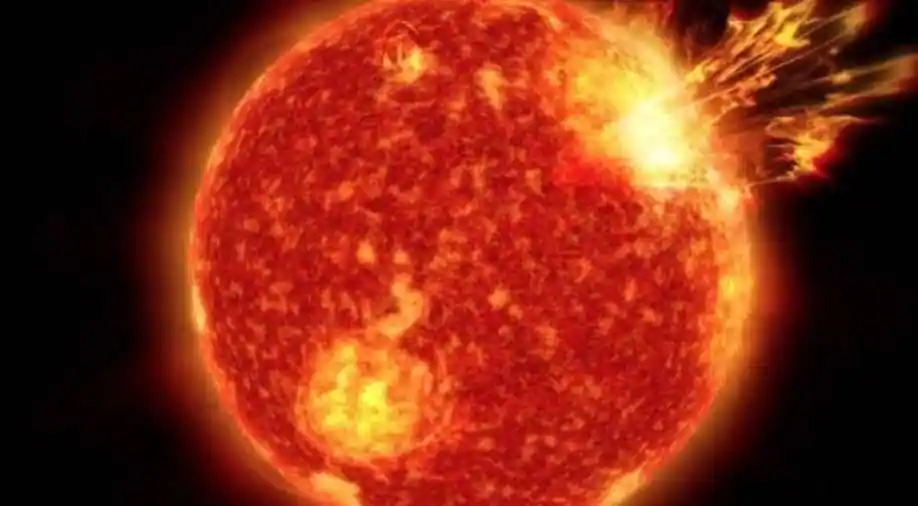
It follows the explosion of the ‘Dragon’ star, also known as EK Draconis, a G1.5V yellow dwarf 110.71 light-years from Earth.
Solar flares cause mass ejections, which have a direct impact on the Earth’s ecosystem, according to scientists.
“Theoretically, a large mass ejection like this may happen on our sun.” This discovery could enhance our understanding of how similar occurrences impacted Earth and even Mars over billions of years,” said co-author Yuta Notsu of the Laboratory for Atmospheric and Space Physics (LASP).
M-type red dwarf stars are not as stable as previously thought, according to a study published in Nature.
However, in terms of brightness changes caused by sunspots and other phenomena, the sun appears to be significantly less active than similar stars.
Researchers said on Thursday that an assessment of 369 stars that were similar to the sun in surface temperatures, size, and rotation period (the sun rotates once on its axis in around 24-1/2 days) revealed that they had five times higher brightness variability than the sun.
“Dark areas on the star’s surface rotate in and out of view, causing this variability,” said astronomer Timo Reinhold of the Max Planck Institute for Solar System Research in Germany.
The sun, which is simply a hot ball of hydrogen and helium, is a medium-sized star that originated around 4.5 billion years ago and is about midway through its life cycle. It has a diameter of around 864,000 miles (1.4 million km). The temperature on its surface is around 10,000 degrees Fahrenheit (5,500 degrees Celsius).
“Temperature and rotation period are assumed to be the main components of the dynamo inside the star, which generates the magnetic field and, eventually, the number and size of the spots that cause the brightness to vary.” “It was unexpected to find stars with very comparable properties to our sun but being five times more volatile,” Reinhold remarked.
Elevated magnetic activity associated with sunspots can cause solar flares, coronal mass ejections, large expulsions of plasma and magnetic field from the sun’s atmosphere, and other electromagnetic phenomena that can affect Earth, disrupting satellites and communications and posing a threat to astronauts.

“A much more active sun might have also affected Earth on geological time scales, paleoclimatology. A ‘too active’ star would definitively change the conditions for life on the planet, so living with a quite boring star is not the worst option,” Reinhold said.
The researchers matched data from similar stars to sun activity records from the past.
Roughly 400 years of sunspot observational data and about 9,000 years of data based on chemical element polymorphisms in tree rings and ice cores produced by solar activity were included in these archives. They claimed that the sun hasn’t been as active as it is currently.
The findings, according to Reinhold, do not rule out the possibility that the sun is in a tranquil period and will become more changeable in the future.




